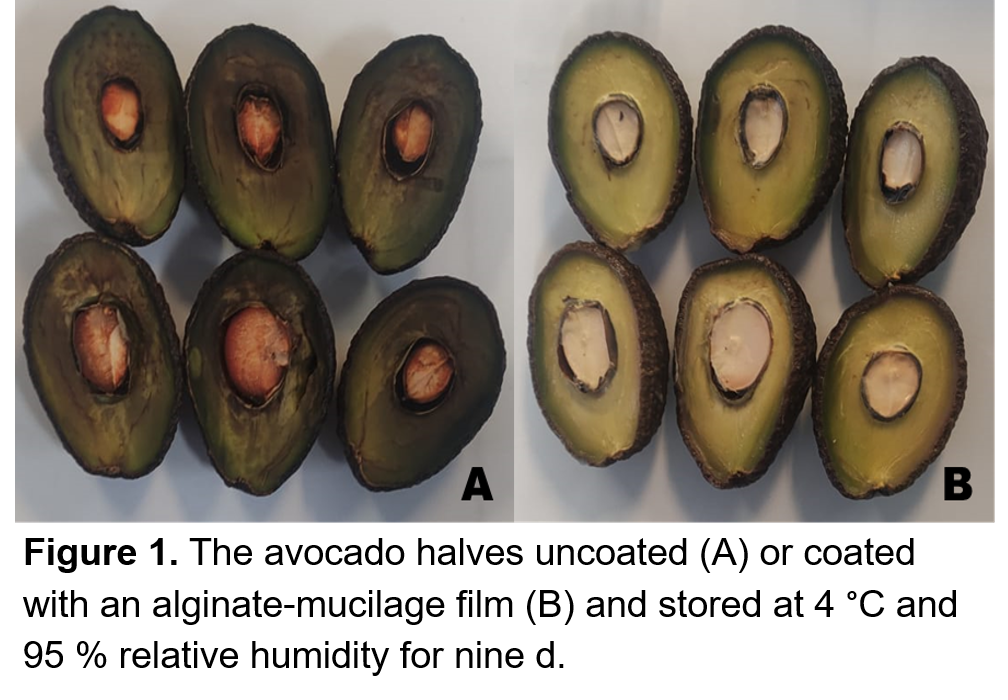Applying an alginate and mucilage-based edible coating to avocado halves favors some physical attributes and consumer acceptance
DOI:
https://doi.org/10.56890/jpacd.v25i.530Palabras clave:
Opuntia albicarpa Scheinvar; mucilage; alginate; shelf life; Persea Americana var. ‘Hass’; sensory analysisResumen
The avocado is a highly perishable fruit, leading to significant potential waste and loss in some links of the agri-food chain, with negative environmental and economic impacts. This study explored the influence of an alginate and mucilage-based edible coating on some physical attributes, cold storage, and consumer acceptance of avocado halves coated at the ready-to-eat stage. Two lots of avocado halves were formed. One was treated with an edible coating formulated from alginate and mucilage; the other was uncoated. Uncoated and coated avocado halves were cold-stored at 4 ± 1 °C and 95% relative humidity for 12 d. The fruit mass loss (FML), fresh firmness (FF), and some color parameters were measured every other day. The experiment was conducted in a completely random design with three replicates at each sampling date. On the sixth day, a sensory study was performed with 30 untrained panelists who were frequent avocado eaters. The coated avocado halves were brighter, redder, and yellower during the experimental period than uncoated avocado halves. A significant color differences (?E*) were found between coated and uncoated avocado halves. At the end of the experiment, the coated samples had the lowest FML and FF and the greatest consumer acceptance. Therefore, the edible coating presented here is a feasible technology for minimally-processed avocado halves and for high-latitude markets, where this fruit is scarce.
##plugins.generic.pfl.publicationFactsTitle##
##plugins.generic.pfl.reviewerProfiles## N/D
##plugins.generic.pfl.authorStatements##
Indexado: {$indexList}
-
##plugins.generic.pfl.indexedList##
- ##plugins.generic.pfl.academicSociety##
- Journal of the Professional Association for Cactus Development
- Editora:
- Professional Association for Cactus Development




